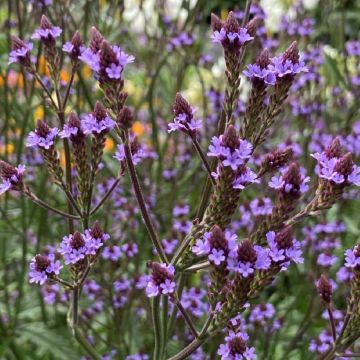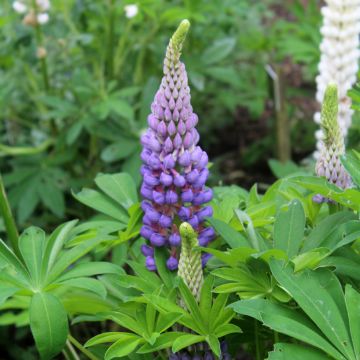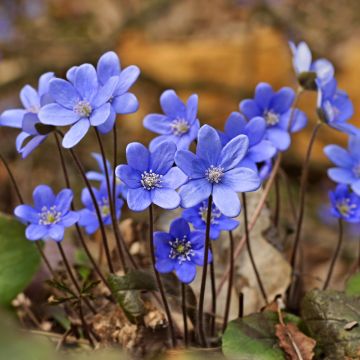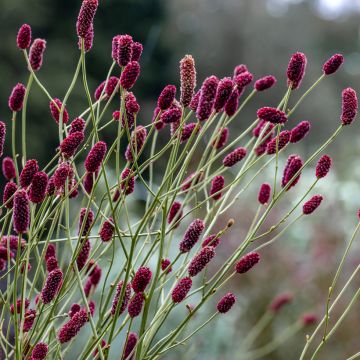

Dietes bicolor
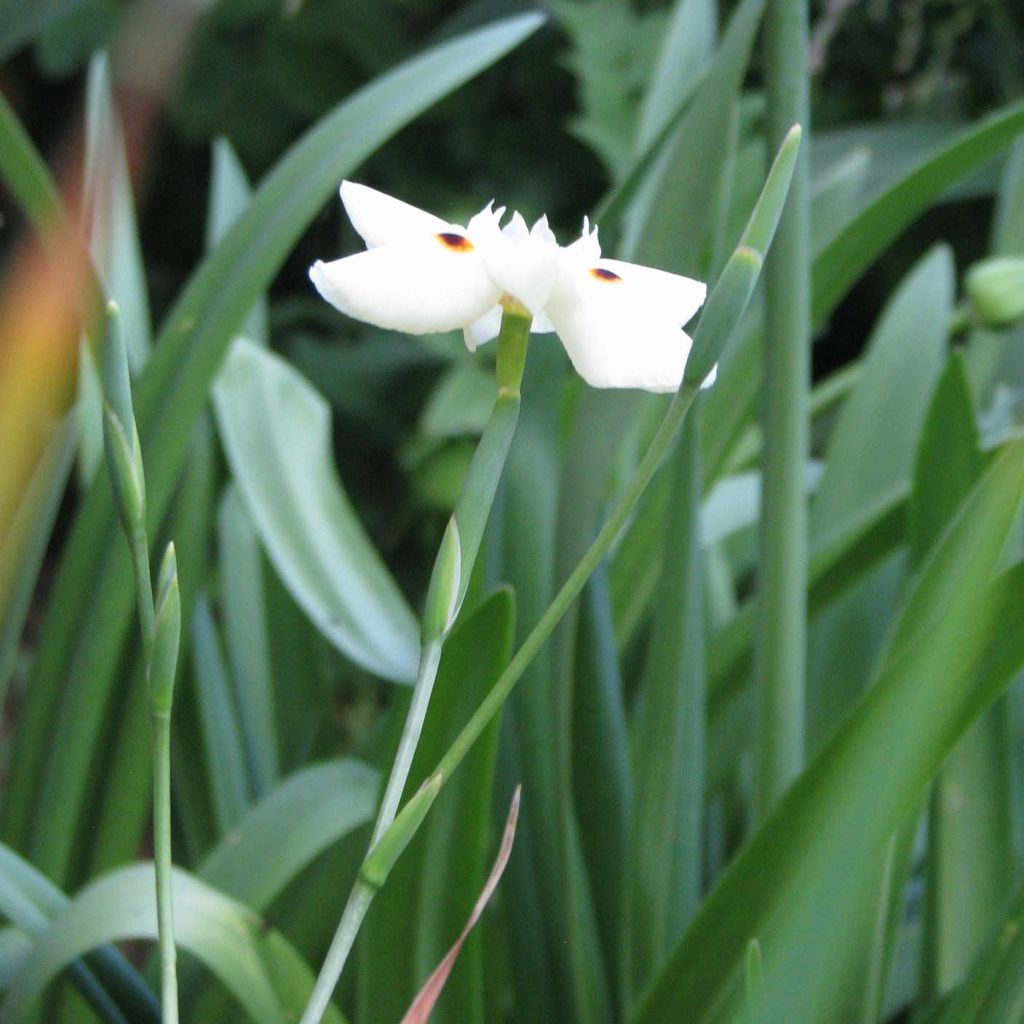

Dietes bicolor


Dietes bicolor
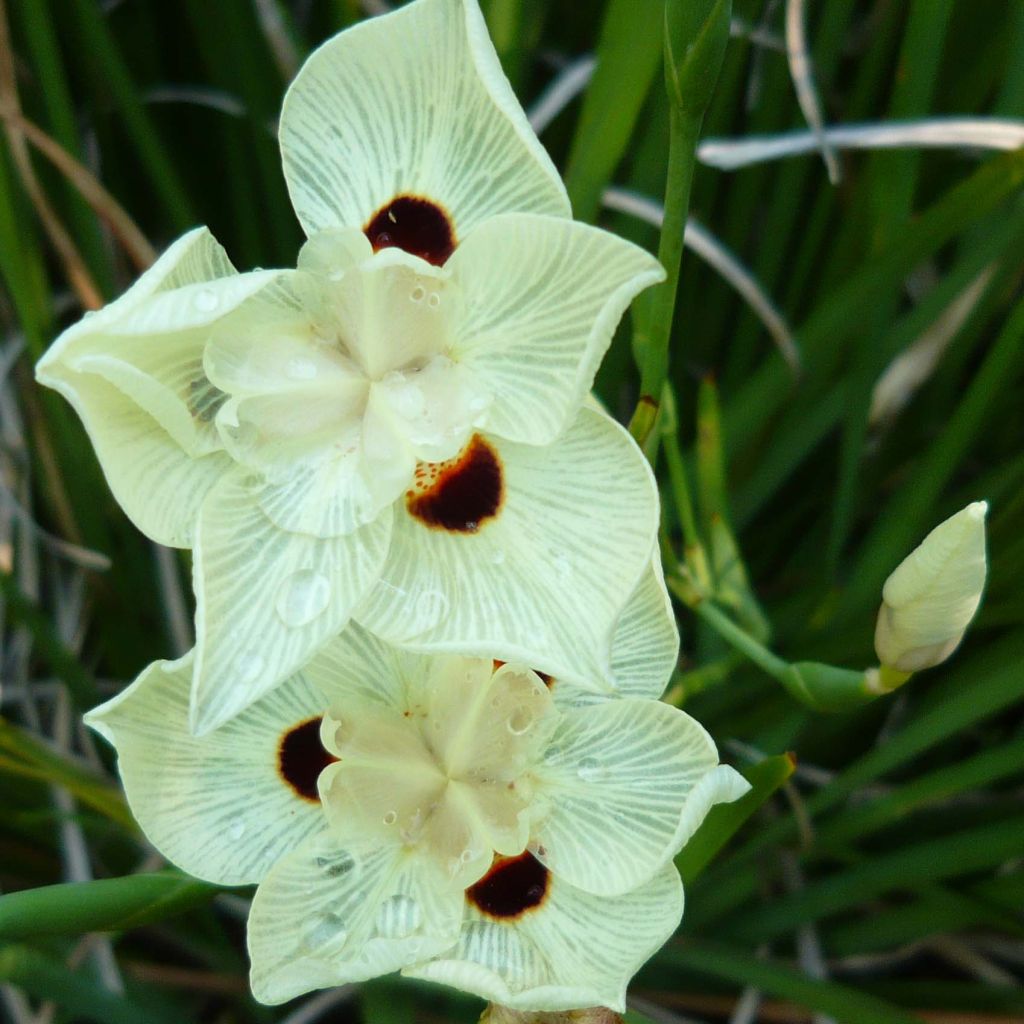

Dietes bicolor
Dietes bicolor
Dietes bicolor
Yellow Wild Iris, Peacock Flower, Butterfly Flag Iris, African Iris, Spanish Iris
This item cannot be shipped to the selected country
Delivery charge from €5.90
Delivery charge from €5.90
More information
Schedule delivery date,
and select date in basket
This plant carries a 12 months recovery warranty
More information
We guarantee the quality of our plants for a full growing cycle, and will replace at our expense any plant that fails to recover under normal climatic and planting conditions.
From €5.90 for pickup delivery and €6.90 for home delivery
Express home delivery from €8.90.
From €5.90 for pickup delivery and €6.90 for home delivery
Express home delivery from €8.90.

Does this plant fit my garden?
Set up your Plantfit profile →
Description
Dietes bicolor, sometimes called Yellow Wild Iris, is a beautiful but tender South African plant. This relative of our irises has evergreen, slender, ribbon-like foliage, that is glossy green, and produces round, pale yellow iris flowers in spring and summer, with three large petals marked with small brown spots at the base. Easy to grow, it is unfortunately not very hardy but can be grown very well in pots, to be placed among other perennials during the summer; it will have a great effect there.
Dietes bicolor is a botanical species belonging to the family Iridaceae. Better known by its former botanical name of Moraea bicolor, it has recently been renamed due to the nature of its storage organ: Moraea grows from a bulb, like certain Irises, while Dietes forms rhizomes. This wild iris is therefore a rhizomatous perennial plant, capable of spreading in width. It establishes and flowers quickly, with the mature plant measuring about 80 cm (32in) in flower height, 60 cm (24in) for the foliage, and spreading over a diameter of 50 to 60 cm (20 to 24in). The Yellow Wild Iris forms a dense and flexible clump of evergreen foliage, slightly arched, linear and glossy green. In late spring and early summer (from June to August depending on the climate), thin stems appear, bearing open panicles of 3 to 6 flowers, 4 cm (2in) in diameter, composed of 6 petals. Their pale yellow colour is more or less spotted on the larger petals, with a small brown-violet spot at the base. They only live for a day or two, but they constantly renew themselves throughout the summer in damp soil. It is not uncommon to see the plant reflower in November and during particularly mild winters.
Dietes bicolor is a species resistant to drought, but much more comfortable in mild oceanic climates. It requires a sunny position to flower, but toerates salt winds. A truly attractive plant in many ways, both lushious and light, its flowering is precious. It is magnificent in wild-inspired gardens, or even Asian-inspired gardens with its clean shapes. It highlights the layout of a pathway and punctuates a bed or rockery with pretty pastel corollas. It pairs well with Sisyrinchium, Dierama, Liatris, agapanthus, or even Calamagrostis x acutiflora 'Karl Foerster'. This perennial will also be highly appreciated in containers, on the patio or balcony during the summer. In the garden, it often perishes from cold when there is excessive soil moisture. It should ideally be planted in damp but well-drained soil, in a very sunny exposure.
It is on the Iberian Peninsula that the first Dietes bicolor were acclimated; that is why the plant is sometimes called Spanish Iris.
Report an error about the product description
Dietes bicolor in pictures






Flowering
Foliage
Plant habit
Botanical data
Dietes
bicolor
Iridaceae
Yellow Wild Iris, Peacock Flower, Butterfly Flag Iris, African Iris, Spanish Iris
South Africa
Other Perennials A to Z
Planting and care
Plant Dietes bicolor in a very sunny position, sheltered from cold winds, in a well-prepared soil, lightened by the addition of coarse sand if necessary. This plant is undemanding in the nature of the soil, which can be poor. It appreciates a moist soil in summer, which supports flowering, but its resistance to drought is very commendable. It is important to protect the stump of Dietes bicolor in regions that experience winter frosts, and remember that the hardiness of the plant depends greatly on the dryness of the soil. We recommend using a thick protective mulch as well as a winter cover in borderline zones for its hardiness. Cultivating it in pots, in potting soil, is entirely possible. Regularly fertilise your Dietes bicolor and don't forget to water it regularly, store it away in winter.
Planting period
Intended location
Care
-
, onOrder confirmed
Reply from on Promesse de fleurs
Summer flowering perennials
Haven't found what you were looking for?
Hardiness is the lowest winter temperature a plant can endure without suffering serious damage or even dying. However, hardiness is affected by location (a sheltered area, such as a patio), protection (winter cover) and soil type (hardiness is improved by well-drained soil).

Photo Sharing Terms & Conditions
In order to encourage gardeners to interact and share their experiences, Promesse de fleurs offers various media enabling content to be uploaded onto its Site - in particular via the ‘Photo sharing’ module.
The User agrees to refrain from:
- Posting any content that is illegal, prejudicial, insulting, racist, inciteful to hatred, revisionist, contrary to public decency, that infringes on privacy or on the privacy rights of third parties, in particular the publicity rights of persons and goods, intellectual property rights, or the right to privacy.
- Submitting content on behalf of a third party;
- Impersonate the identity of a third party and/or publish any personal information about a third party;
In general, the User undertakes to refrain from any unethical behaviour.
All Content (in particular text, comments, files, images, photos, videos, creative works, etc.), which may be subject to property or intellectual property rights, image or other private rights, shall remain the property of the User, subject to the limited rights granted by the terms of the licence granted by Promesse de fleurs as stated below. Users are at liberty to publish or not to publish such Content on the Site, notably via the ‘Photo Sharing’ facility, and accept that this Content shall be made public and freely accessible, notably on the Internet.
Users further acknowledge, undertake to have ,and guarantee that they hold all necessary rights and permissions to publish such material on the Site, in particular with regard to the legislation in force pertaining to any privacy, property, intellectual property, image, or contractual rights, or rights of any other nature. By publishing such Content on the Site, Users acknowledge accepting full liability as publishers of the Content within the meaning of the law, and grant Promesse de fleurs, free of charge, an inclusive, worldwide licence for the said Content for the entire duration of its publication, including all reproduction, representation, up/downloading, displaying, performing, transmission, and storage rights.
Users also grant permission for their name to be linked to the Content and accept that this link may not always be made available.
By engaging in posting material, Users consent to their Content becoming automatically accessible on the Internet, in particular on other sites and/or blogs and/or web pages of the Promesse de fleurs site, including in particular social pages and the Promesse de fleurs catalogue.
Users may secure the removal of entrusted content free of charge by issuing a simple request via our contact form.
The flowering period indicated on our website applies to countries and regions located in USDA zone 8 (France, the United Kingdom, Ireland, the Netherlands, etc.)
It will vary according to where you live:
- In zones 9 to 10 (Italy, Spain, Greece, etc.), flowering will occur about 2 to 4 weeks earlier.
- In zones 6 to 7 (Germany, Poland, Slovenia, and lower mountainous regions), flowering will be delayed by 2 to 3 weeks.
- In zone 5 (Central Europe, Scandinavia), blooming will be delayed by 3 to 5 weeks.
In temperate climates, pruning of spring-flowering shrubs (forsythia, spireas, etc.) should be done just after flowering.
Pruning of summer-flowering shrubs (Indian Lilac, Perovskia, etc.) can be done in winter or spring.
In cold regions as well as with frost-sensitive plants, avoid pruning too early when severe frosts may still occur.
The planting period indicated on our website applies to countries and regions located in USDA zone 8 (France, United Kingdom, Ireland, Netherlands).
It will vary according to where you live:
- In Mediterranean zones (Marseille, Madrid, Milan, etc.), autumn and winter are the best planting periods.
- In continental zones (Strasbourg, Munich, Vienna, etc.), delay planting by 2 to 3 weeks in spring and bring it forward by 2 to 4 weeks in autumn.
- In mountainous regions (the Alps, Pyrenees, Carpathians, etc.), it is best to plant in late spring (May-June) or late summer (August-September).
The harvesting period indicated on our website applies to countries and regions in USDA zone 8 (France, England, Ireland, the Netherlands).
In colder areas (Scandinavia, Poland, Austria...) fruit and vegetable harvests are likely to be delayed by 3-4 weeks.
In warmer areas (Italy, Spain, Greece, etc.), harvesting will probably take place earlier, depending on weather conditions.
The sowing periods indicated on our website apply to countries and regions within USDA Zone 8 (France, UK, Ireland, Netherlands).
In colder areas (Scandinavia, Poland, Austria...), delay any outdoor sowing by 3-4 weeks, or sow under glass.
In warmer climes (Italy, Spain, Greece, etc.), bring outdoor sowing forward by a few weeks.






































